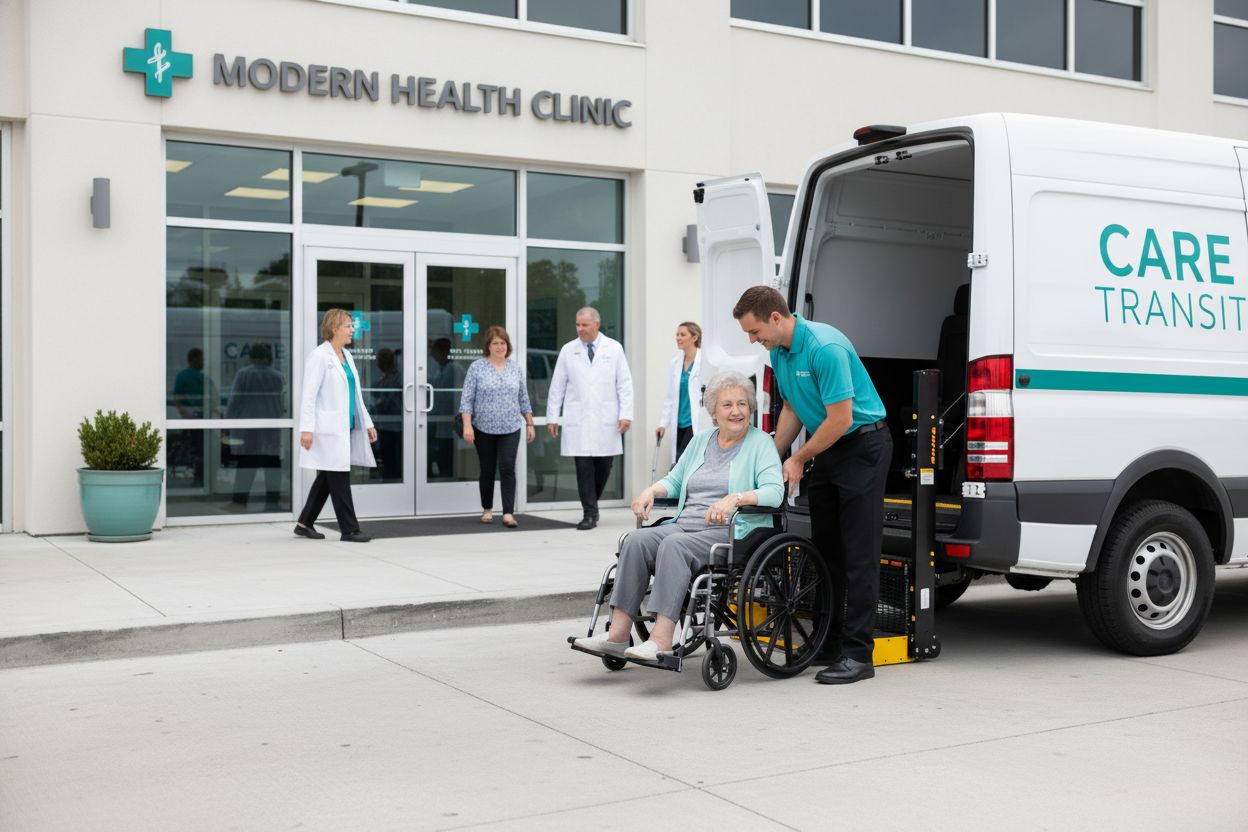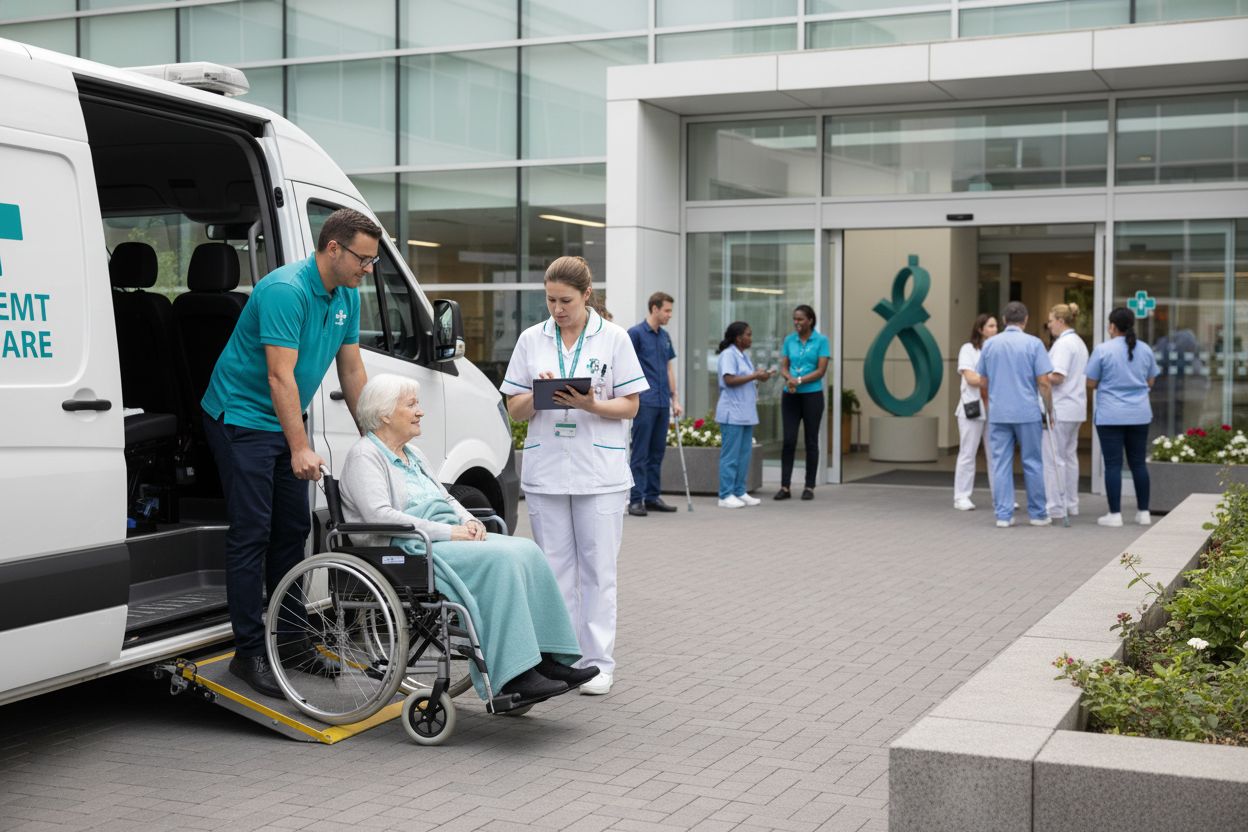Medical Transportation Brokers: Complete Guide USA
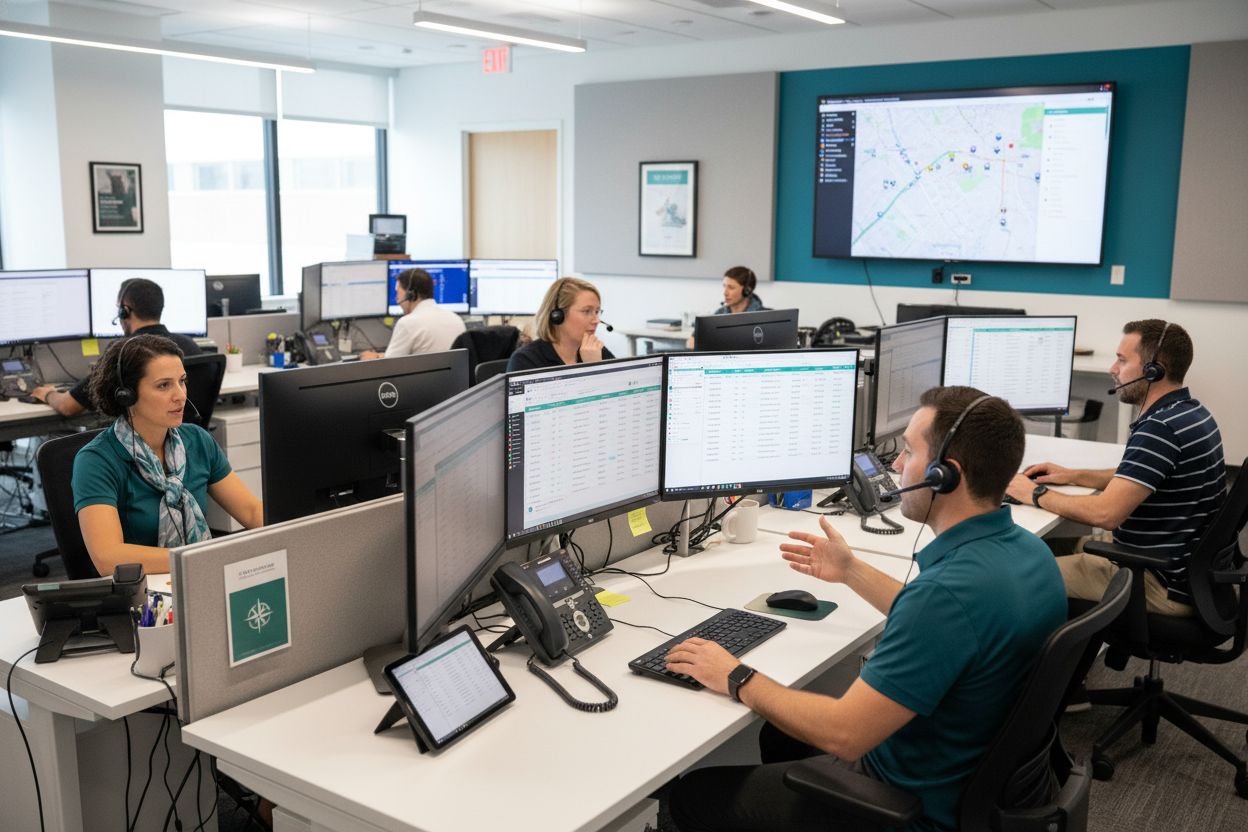
Every year, millions of patients in the United States miss crucial medical appointments due to transportation barriers, with over 3.6 million Americans lacking reliable access to care. Medical transportation brokers step in as vital connectors, ensuring people get to their appointments safely and on time. Their service shapes how healthcare reaches those who need it most, blending technology and logistics to improve patient access and support health outcomes across communities.
Key Takeaways
| Point | Details |
|---|---|
| Medical Transportation Brokers’ Role | Brokers facilitate non-emergency medical transportation by connecting patients with suitable transportation providers and managing logistics within healthcare systems. |
| Service Delivery Models | Brokers operate under various models, including regional, statewide, managed care, and fee-for-service, tailored to specific patient populations and regulatory frameworks. |
| Operational Workflow | Brokers engage in a multi-step process for managing patient transportation, including eligibility verification, provider matching, and performance tracking through advanced technologies. |
| Compliance and Challenges | Brokers must adhere to strict regulatory standards concerning driver qualifications and data security while addressing operational challenges like provider dependence and communication barriers. |
Table of Contents
- What Are Medical Transportation Brokers?
- Key Types And Service Categories Explained
- How Medical Transportation Brokers Operate
- Regulatory Compliance And Industry Standards
- Roles, Responsibilities, And Common Challenges
- Costs, Reimbursement, And Technology Integration
What Are Medical Transportation Brokers?
Medical transportation brokers are specialized intermediaries who connect patients with transportation services, primarily focusing on non-emergency medical transportation (NEMT) within healthcare systems. According to the National Conference of State Legislatures, these brokers play a critical role in coordinating transportation for patients, especially those in the Medicaid system.
At their core, NEMT brokers perform several key functions:
- Matching patients with appropriate transportation providers
- Verifying patient transportation eligibility
- Managing complex provider networks
- Processing and handling transportation payments
- Tracking service performance and quality metrics
These brokers essentially act as sophisticated logistical coordinators, ensuring that patients who cannot drive themselves can still access essential medical services. Read more about the risks and challenges in the broker system to understand the nuanced landscape of medical transportation coordination. For Medicaid beneficiaries especially, these brokers are crucial in navigating transportation requirements, helping patients schedule rides to medical appointments, treatments, and healthcare facilities.
In practice, medical transportation brokers operate on either a capitated or managed basis, working directly with state agencies to streamline patient logistics. They leverage technology and extensive provider networks to create efficient, reliable transportation solutions that meet diverse patient needs across different geographical and demographic contexts.
Key Types and Service Categories Explained
Medical transportation brokers operate through several distinct delivery models, each designed to address specific healthcare transportation needs. According to the National Conference of State Legislatures (NCSL), these models range from in-house fee-for-service approaches to more complex managed care and brokerage systems, with brokerage models emerging as the most prevalent nationwide.
The primary service categories for medical transportation brokers include:
- Regional Brokers: Operating within specific geographic regions
- Statewide Brokers: Managing transportation across entire state systems
- Managed Care Brokers: Integrated with broader healthcare management networks
- Fee-for-Service Brokers: Charging per transportation service provided
Learn more about understanding medical transportation providers to gain deeper insights into these intricate service models. Each model serves unique populations, from Medicaid beneficiaries to specialized patient groups requiring consistent medical transportation support.
Here’s a comparison of the main types of medical transportation broker service models:
| Service Model | Coverage Area | Typical Clients | Payment Structure |
|---|---|---|---|
| Regional Broker | Specific regions | Medicaid Local patients |
Managed Capitated |
| Statewide Broker | Entire state | Medicaid recipients | Managed Fee-for-service |
| Managed Care Broker | Large networks | Managed care organizations | Integrated payments |
| Fee-for-Service | Variable | General public Providers |
Per trip/service |
The selection of a specific broker model depends on multiple factors, including state regulations, population density, healthcare infrastructure, and budget constraints.
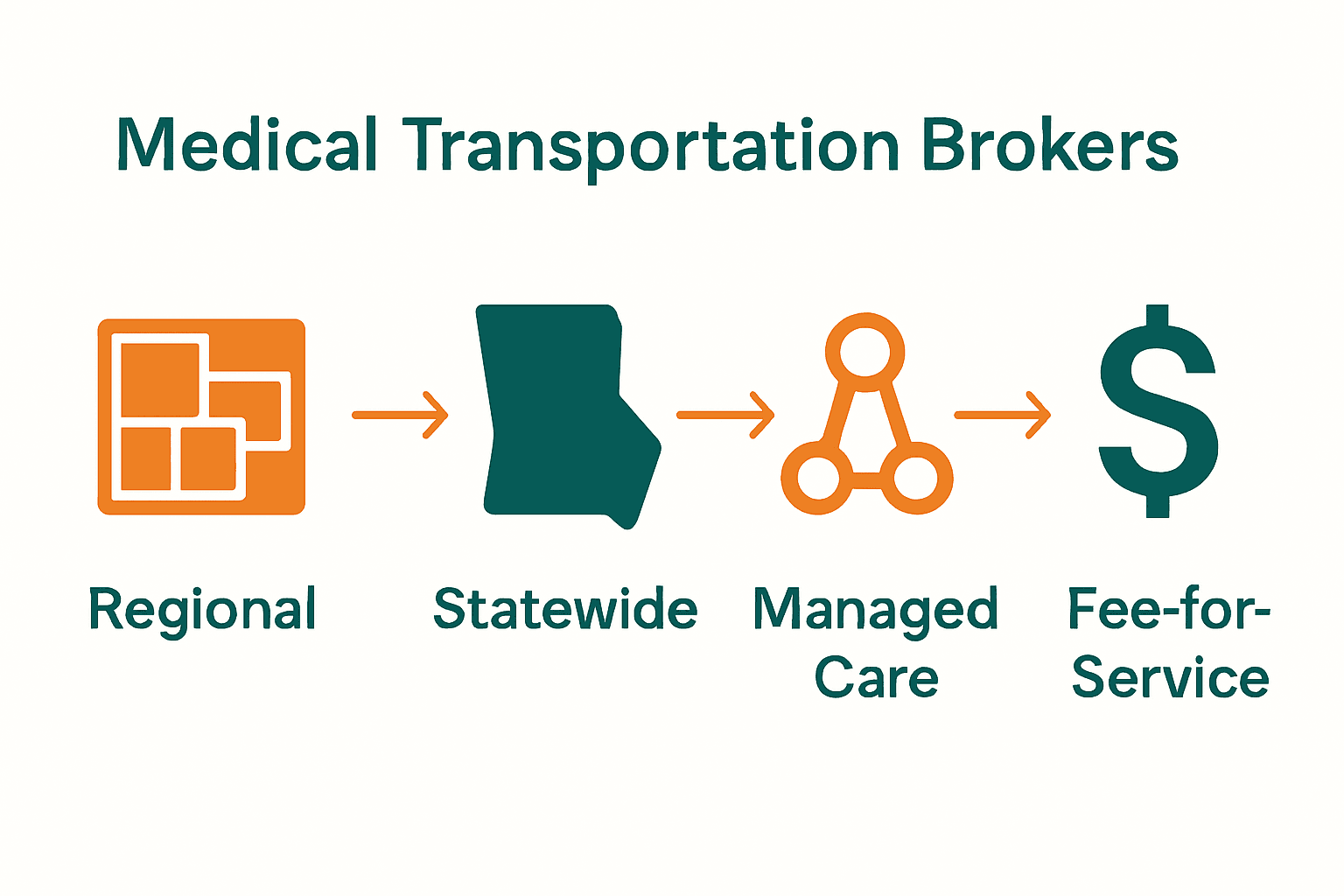
Some states utilize hybrid approaches, combining elements from different models to create more flexible and responsive transportation networks that can adapt to evolving healthcare transportation requirements.
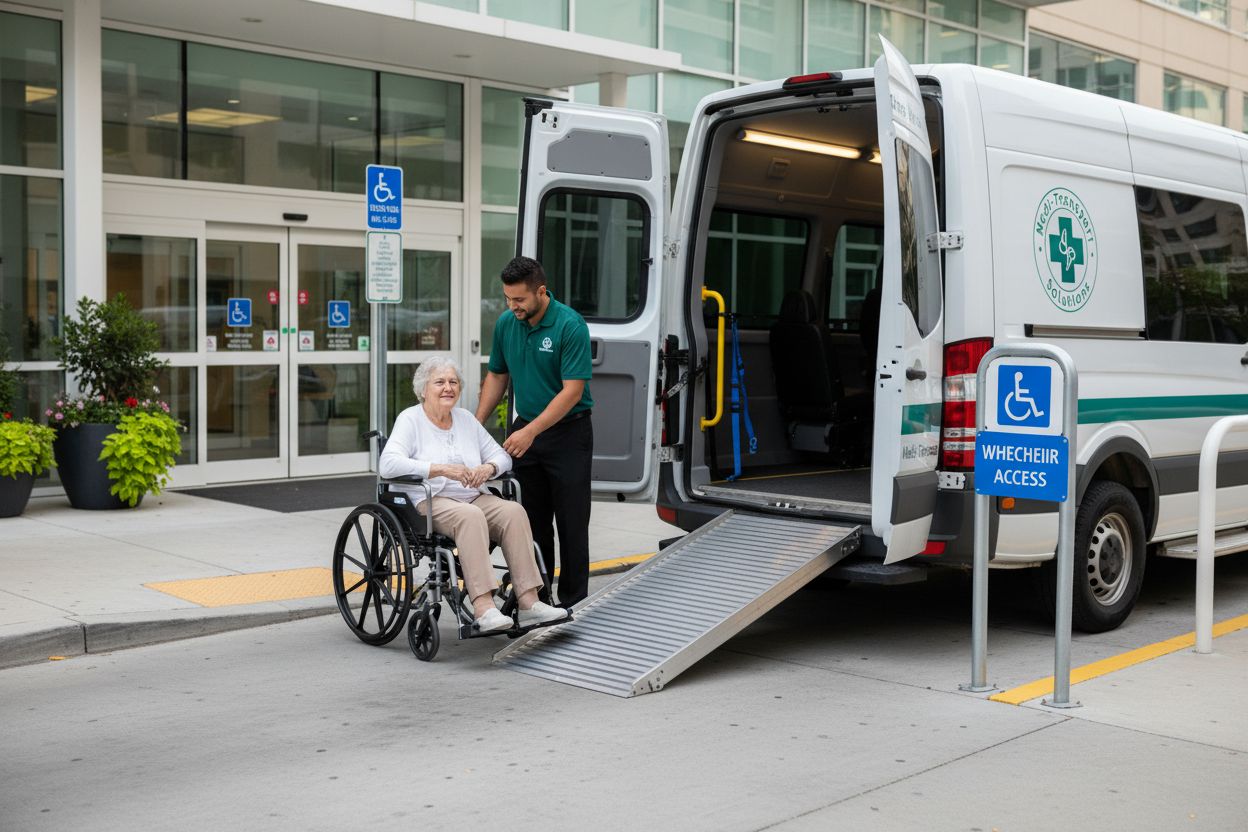
How Medical Transportation Brokers Operate
Medical transportation brokers function through a complex, technology-driven process that efficiently manages patient transportation needs. According to the National Conference of State Legislatures, brokers receive trip requests and initiate a multi-step workflow that involves rigorous eligibility verification, transportation authorization, and strategic provider assignment.
The operational workflow typically includes several critical steps:
- Receiving and processing patient transportation requests
- Verifying patient transportation eligibility
- Performing detailed credentialing of transportation providers
- Matching patients with appropriate vehicle types
- Coordinating and scheduling transportation logistics
- Processing financial transactions and payments
- Monitoring and tracking trip performance metrics
Explore key insights into NEMT broker functions to understand the intricate mechanisms behind these systems. Most brokers leverage centralized call centers and advanced technological platforms to streamline operations, often working with a capitated funding model that consolidates resources and optimizes regional transportation networks.
Technology plays a pivotal role in broker operations, enabling real-time tracking, efficient provider matching, and comprehensive performance monitoring. By building extensive networks of verified transportation providers and utilizing sophisticated software solutions, brokers can ensure reliable, safe, and cost-effective medical transportation services for diverse patient populations.
Regulatory Compliance and Industry Standards
Medical transportation brokers operate within a complex regulatory landscape governed by stringent industry standards designed to ensure patient safety, data protection, and service quality. According to the Non-Emergency Medical Transportation Accreditation Committee (NEMTAC), an ANSI-accredited standards developer, comprehensive best practices have been established to maintain reliability across the transportation ecosystem.
Key compliance requirements for medical transportation brokers include:
- Rigorous driver qualification protocols
- Comprehensive vehicle documentation standards
- HIPAA-compliant data security measures
- Mandatory credential tracking systems
- Regular safety and operational audits
- Performance and quality monitoring mechanisms
Learn more about navigating regulatory compliance in healthcare to grasp the intricate legal frameworks governing medical transportation. Non-compliance can result in substantial consequences, including significant financial penalties, potential legal actions, and contract terminations, which underscore the critical importance of maintaining meticulous adherence to established standards.
Technology has emerged as a powerful ally in managing these complex regulatory requirements. Advanced digital platforms enable real-time credential verification, automated compliance tracking, and comprehensive documentation management, helping brokers maintain the highest standards of operational excellence and patient care.
Roles, Responsibilities, And Common Challenges
Medical transportation brokers play a multifaceted role in healthcare logistics, serving as critical intermediaries that connect patients with essential transportation services. According to industry research from Tobi Cloud, brokers are responsible for building extensive provider networks, managing complex scheduling and coordination efforts, negotiating transportation costs, and leveraging technology to improve dispatching and tracking capabilities.
Key responsibilities of medical transportation brokers include:
- Developing and maintaining comprehensive provider networks
- Negotiating competitive transportation rates
- Implementing advanced dispatching technologies
- Ensuring efficient trip coordination
- Reducing healthcare transportation disparities
- Improving overall patient accessibility
Understand the intricacies of NEMT broker operations to gain deeper insights into their complex ecosystem. However, brokers face significant challenges, including potential provider dependence, communication barriers, technological limitations, and the risk of in-house competition from broker-owned service providers.
Technology and strategic innovation are becoming crucial in addressing these challenges. By investing in robust digital platforms, implementing comprehensive training programs, and developing transparent communication protocols, medical transportation brokers can overcome operational hurdles and continue to play a vital role in improving healthcare accessibility for diverse patient populations.
Costs, Reimbursement, And Technology Integration
Medical transportation brokers navigate a complex financial landscape that demands sophisticated technological solutions and strategic financial management. According to industry research, brokers face significant challenges in managing reimbursement cycles, balancing competitive rates, and ensuring timely provider compensation within intricate billing ecosystems.
Key financial and technological integration strategies include:
- Implementing real-time billing and tracking systems
- Developing direct digital connections with transportation providers
- Automating manual trip entry and documentation processes
- Enhancing compliance through technology-enabled workflows
- Accelerating billing cycle efficiency
- Providing transparent financial reporting mechanisms
Explore strategies for reducing healthcare operational costs to understand the broader financial optimization landscape. Advanced technological integrations are revolutionizing broker operations by creating seamless digital connections that reduce administrative overhead, minimize billing delays, and enable scalable, patient-centric transportation solutions.
Modern broker platforms leverage sophisticated software that transforms financial management from a complex challenge into a streamlined, data-driven process. By combining advanced technologies with strategic financial planning, medical transportation brokers can create more efficient, transparent, and responsive transportation networks that benefit patients, providers, and healthcare systems alike.
Ready to Transform How You Manage Medical Transportation?
Many healthcare leaders struggle to keep pace with the complex workflows and compliance needs described in our complete guide on medical transportation brokers. Scheduling headaches, eligibility verification delays, and coordination challenges can block patient access and drive up administrative costs. If you recognize these obstacles in your own operations or if you want to better manage NEMT networks, provider communications, and regulatory demands, you are not alone.
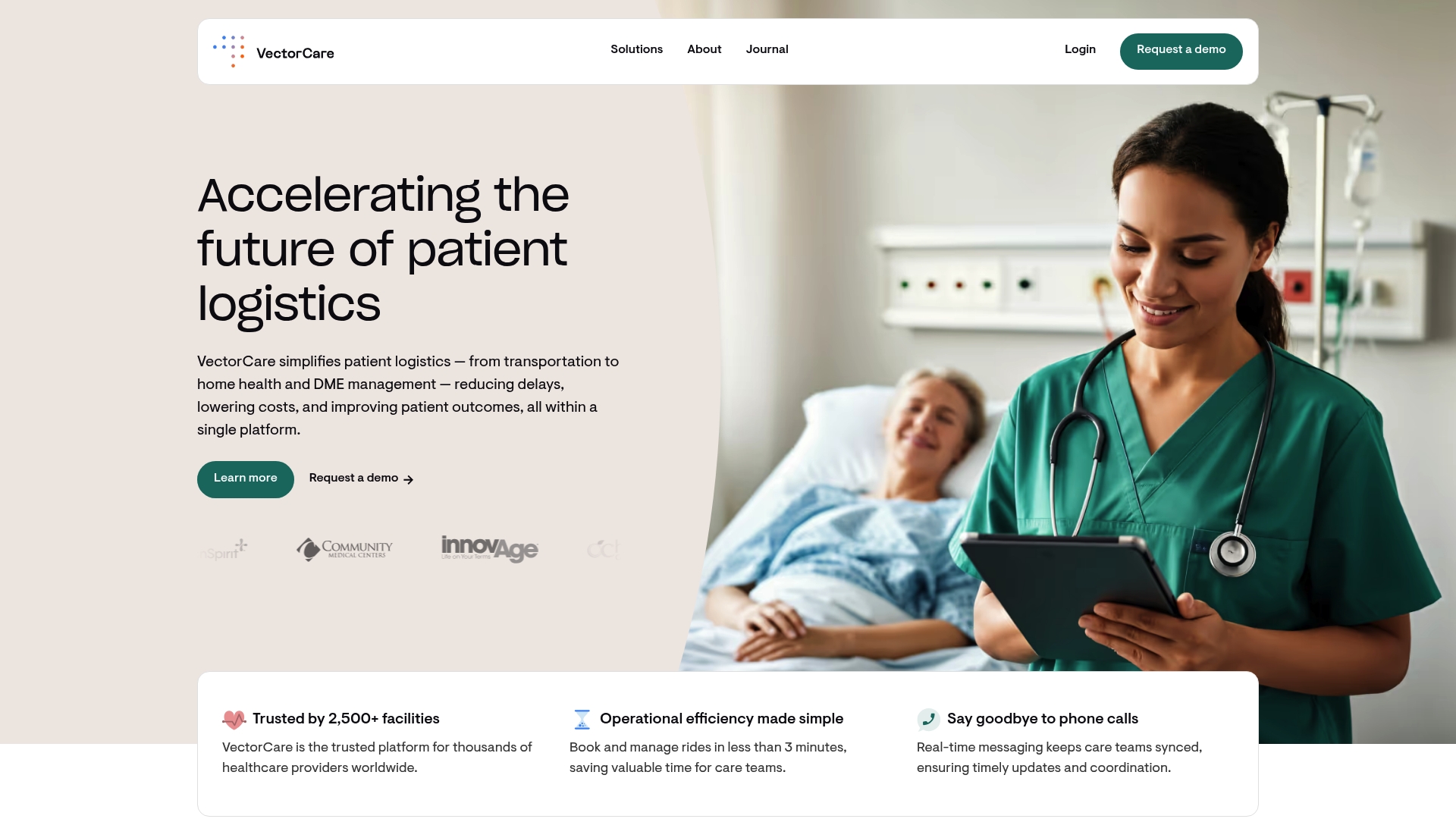
Stop letting outdated systems hold you back. VectorCare brings all the tools you need onto one secure digital platform so your team can automate scheduling, streamline provider management, and ensure real-time compliance. Want to see how AI-driven workflows, ultra-easy credential tracking, and automated dispatch work in action? Visit VectorCare’s platform overview or dive deeper into technology solutions for efficient patient logistics. Take the next step today and discover how better coordination and compliance can save costs and improve care for every patient journey.
Frequently Asked Questions
What are medical transportation brokers?
Medical transportation brokers are intermediaries that connect patients with non-emergency medical transportation services, helping to coordinate rides to medical appointments and treatments.
How do medical transportation brokers operate?
Brokers manage patient transportation needs through a multi-step workflow, including eligibility verification, provider matching, coordinating logistics, and processing payments.
What types of transportation models do brokers use?
Brokers use various delivery models such as regional, statewide, managed care, and fee-for-service approaches, each designed to address specific healthcare transportation needs.
What challenges do medical transportation brokers face?
Brokers encounter challenges like provider dependence, communication barriers, technological limitations, and competition from in-house service providers.

